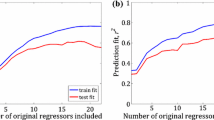Abstract
In a static setting, willingness to pay for an environmental improvement is equal to compensating variation. In a dynamic setting, however, willingness to pay may also contain a commitment cost. In this paper we incorporate the dynamic nature of the value formation process into a stated preference study designed to test whether there is an important dynamic component (commitment cost) in stated preference values. The results clearly indicate that stated preference values can contain commitment costs and that these can be quite large: respondents offered the opportunity to delay their purchasing decisions until more information became available were willing to pay significantly less for improved water quality than those facing a now-or-never decision. These results have important consequences for the design and interpretation of stated preference data.
Similar content being viewed by others
References
Arrow K and Fisher A (1974). Environmental preservation, uncertainty and irreversibility. Quart J Econ 88: 312–319
Bergstrom J, Stoll J and Randall A (1990). The impact of information on environmental commodity valuation decisions. Am J Agric Econ 72: 614–621
Blomquist G and Whitehead J (1998). Resource quality information and validity of willingness to pay in contingent valuation. Res Energy Econ 20: 179–196
Cameron T (1988). A new paradigm for valuing non-market goods using referendum data: maximum likelihood estimation by censored logistic regression. J Environ Econ Manage 15: 355–379
Carson R, Hanemann M, Kopp R, Krosnick J, Mitchell R, Presser S, Ruud P and Smith VK (1997). Temporal reliability of estimates from contingent valuation. Land Econ 73: 151–163
Carson R, Hanemann M, Kopp R, Krosnick J, Mitchell R, Presser S, Ruud P and Smith VK (1998). Referendum design and contingent valuation: the NOAA panel’s no-vote recommendation. Rev Econ Stat 80: 484–487
Corrigan J (2005). Is the experimental auction a dynamic market?. Environ Res Econ 31: 35–45
Cummings R and Taylor L (1999). Unbiased value estimates for environmental goods: a cheap talk design for the contingent valuation method. Am Econ Rev 89: 649–665
Dillman DA (1978). Mail and telephone surveys: the total design method. John Wiley and Sons, NY
Dixit A and Pindyck R (1994). Investment under uncertainty. Princeton University Press, Princeton
Hanemann M (1989). Information and the concept of option value. J Environ Econ Manage 16: 23–37
Henry C (1974) Option values in the economics of irreplaceable assets. In: Review of economic studies: symposium on the economics of exhaustible resources, pp 89–104
Hoehn J and Randall A (2002). The effect of resource quality information on resource injury perceptions and contingent values. J Res Energy Econ 24: 13–31
Horowitz J and McConnell K (2002). A review of WTA/WTP studies. J Environ Econ Manage 44: 426–447
Horowitz J and McConnell K (2003). Willingness to accept, willingness to pay and the income effect. J Econ Behav Organ 51: 537–545
Kling C, List J, Zhao J (2003) The WTP/WTA disparity: have we been observing dynamic values but interpreting them as static? Working paper, Iowa State University
List J (2001). Do explicit warnings eliminate the hypothetical bias in elicitation procedures? Evidence from field auctions of sportscards. Am Econ Rev 91: 1498–1507
Loomis J (1990). Comparative reliability of the dichotomous choice and open-ended contingent valuation techniques. J Environ Econ Manage 18: 78–85
Lusk J (2003). An experimental test of the commitment cost theory. Am J Agric Econ 85: 1316–1322
Park T, Loomis J and Creel M (1991). Confidence intervals for evaluating benefits estimates from dichotomous choice contingent valuation studies. Land Econ 67: 64–73
Samples K, Dixon J and Gowen M (1986). Information disclosure and endangered species valuation. Land Econ 62: 306–312
Whitehead J and Blomquist G (1997). Measuring contingent values for wetlands: effects of information about related environmental goods. Water Res Res 27: 2523–2531
Zhao J and Kling C (2001). A new explanation for the WTP/WTA disparity. Econ Lett 73: 293–300
Zhao J and Kling C (2004). Willingness to pay, compensating variation and the cost of commitment. Econ Inq 42: 503–517
Author information
Authors and Affiliations
Corresponding author
Additional information
Corrigan was a visiting collaborator at the Center for Agricultural and Rural Development, and Kling was a visiting researcher, Institut National de la Recherche Agronomique (INRA), France while part of the research was completed.
Rights and permissions
About this article
Cite this article
Corrigan, J.R., Kling, C.L. & Zhao, J. Willingness to Pay and the Cost of Commitment: An Empirical Specification and Test. Environ Resource Econ 40, 285–298 (2008). https://doi.org/10.1007/s10640-007-9153-0
Received:
Accepted:
Published:
Issue Date:
DOI: https://doi.org/10.1007/s10640-007-9153-0




